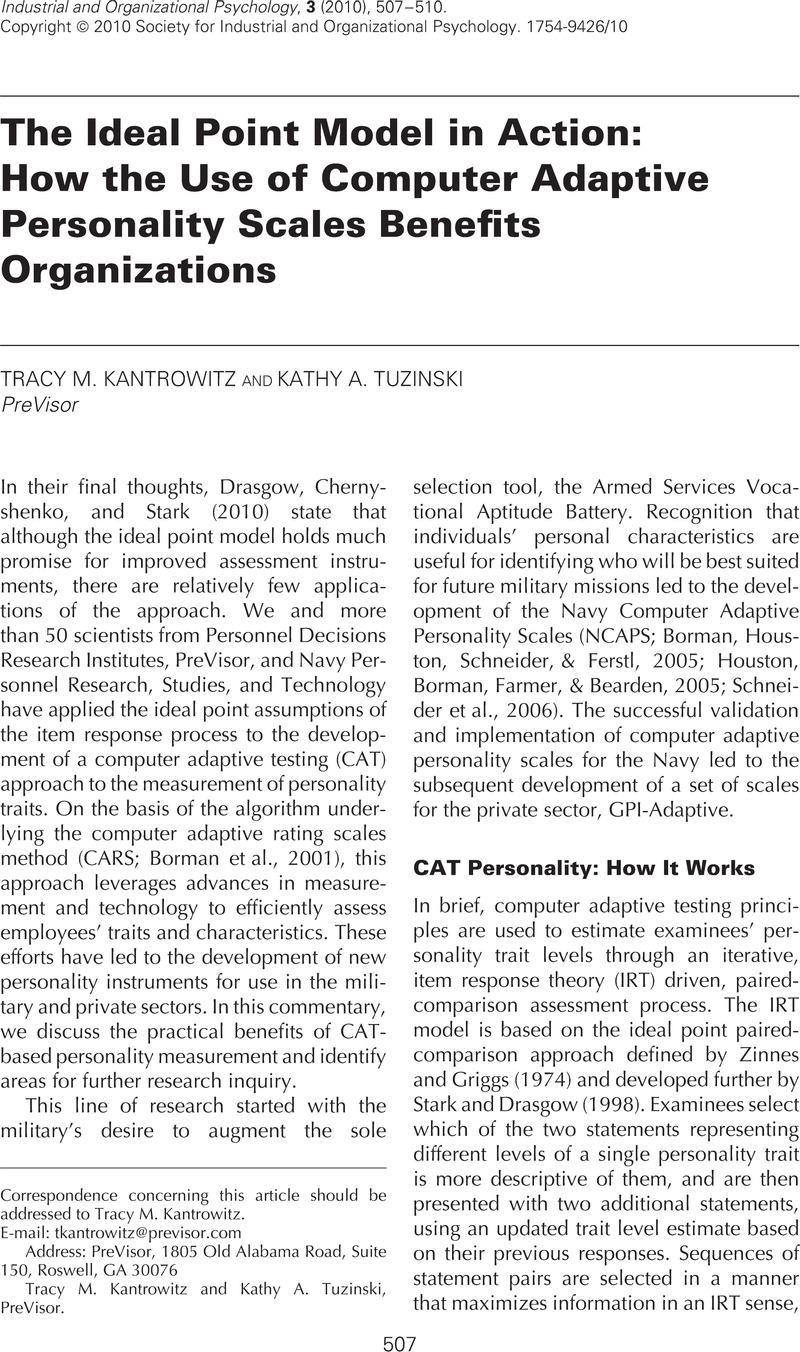Crossref Citations
This article has been cited by the following publications. This list is generated based on data provided by Crossref.
Drasgow, Fritz
Chernyshenko, Oleksandr S.
and
Stark, Stephen
2010.
Improving the Measurement of Psychological Variables: Ideal Point Models Rock!.
Industrial and Organizational Psychology,
Vol. 3,
Issue. 4,
p.
515.
Stark, Stephen
and
Chernyshenko, Oleksandr S.
2011.
Computerized Adaptive Testing with the Zinnes and Griggs Pairwise Preference Ideal Point Model.
International Journal of Testing,
Vol. 11,
Issue. 3,
p.
231.
Kantrowitz, Tracy M.
Dawson, Craig R.
and
Fetzer, Michael S.
2011.
Computer Adaptive Testing (CAT): A Faster, Smarter, and More Secure Approach to Pre-Employment Testing.
Journal of Business and Psychology,
Vol. 26,
Issue. 2,
p.
227.
Liu, Chen-Wei
Chalmers, R. Philip
and
Gnambs, Timo
2018.
Fitting item response unfolding models to Likert-scale data using mirt in R.
PLOS ONE,
Vol. 13,
Issue. 5,
p.
e0196292.
Joo, Seang-Hwane
Lee, Philseok
and
Stark, Stephen
2020.
Adaptive testing with the GGUM-RANK multidimensional forced choice model: Comparison of pair, triplet, and tetrad scoring.
Behavior Research Methods,
Vol. 52,
Issue. 2,
p.
761.



